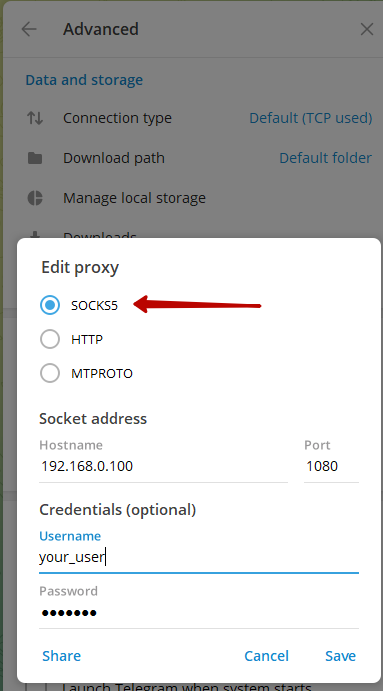To bypass numerous restrictions that may be related to your location, you can use the SOCKS technology. T
In this article, we will discuss how to install it in a Docker container, also using docker-compose.
But first, you need to update the OS packages.
apt updateLet's install the necessary packages and add a new repository:
apt install apt-transport-https ca-certificates curl gnupg-agent software-properties-common
curl -fsSL https://download.docker.com/linux/ubuntu/gpg | sudo apt-key add -
add-apt-repository "deb [arch=amd64] https://download.docker.com/linux/ubuntu $(lsb_release -cs) stable"
Let's update the packages with the new repository:
apt update
Now let's install Docker itself.
apt-get install docker-ce docker-ce-cli containerd.io
Let's check the version:
docker --version
 Let's check the status:
Let's check the status:
systemctl status docker

If it hasn't started, then start it:
systemctl start docker
And add it to the autostart.
systemctl enable docker

For this project, version 1.25 will be sufficient.
curl -L "https://github.com/docker/compose/releases/download/1.25.5/docker-compose-$(uname -s)-$(uname -m)" -o /usr/local/bin/docker-compose
Let's set the execution rights.
chmod +x /usr/local/bin/docker-compose
Let's check how Docker-Compose was installed:
docker-compose --version

Let's add the Linux user to the docker group:
usermod -aG docker $USER
Let's create a *.yaml file for Docker-Compose.
To keep track of what we have installed in the future, let's create a separate folder for this project in the /home directory and navigate to it.
mkdir /home/socks5 && cd /home/socks5
You can also use another directory to place this and other projects.
Let's use the repository to create the docker-compose.yaml file at the link https://hub.docker.com/r/xkuma/socks5
Let's create the file docker-compose.yaml or docker-compose.yml,
vim docker-compose.yaml
And add the following code to it:
version: "2.1"
services:
socks5:
image: olebedev/socks5
container_name: socks5_test
environment:
- PROXY_USER=your_user
- PROXY_PASSWORD=your_pass
ports:
- 1080:1080/tcp
restart: always
Where:
container_name: the name of your container;
PROXY_USER: user;
PROXY_PASSWORD: user password
1080:1080/tcp: the port on which SOCKS will operate.
Let's run the script (for this, you need to be in the directory where our file was created. In this case, it is /home/socks5/):
docker-compose up -d
Wait for the images to download and deploy.
Let's check:
docker-compose ps
or
docker ps

You can also do this with a single command without using docker compose.
docker run -d -p 1080:1080 -e PROXY_USER=your_user -e PROXY_PASSWORD=your_pass -e PROXY_SERVER=0.0.0.0:1080 xkuma/socks5
Now for the connection, you can use the login and password with the port and IP of your server.
To check and ensure everything is set up correctly, we can use the command below on another server:
curl --socks5 your_user:your_pass@192.168.0.100:1080 https://ifconfig.io
If everything is set up correctly, we will receive the IP of the server where our SOCKS5 is hosted.
For example, to connect SOCKS5 in Telegram, enter:
Server/Host: IP:1080
User: your_user
Password: your_pass

In browsers, Google Chrome or Firefox, you can use additional plugins to connect to this SOCKS5.
Wishing you safe surfing.